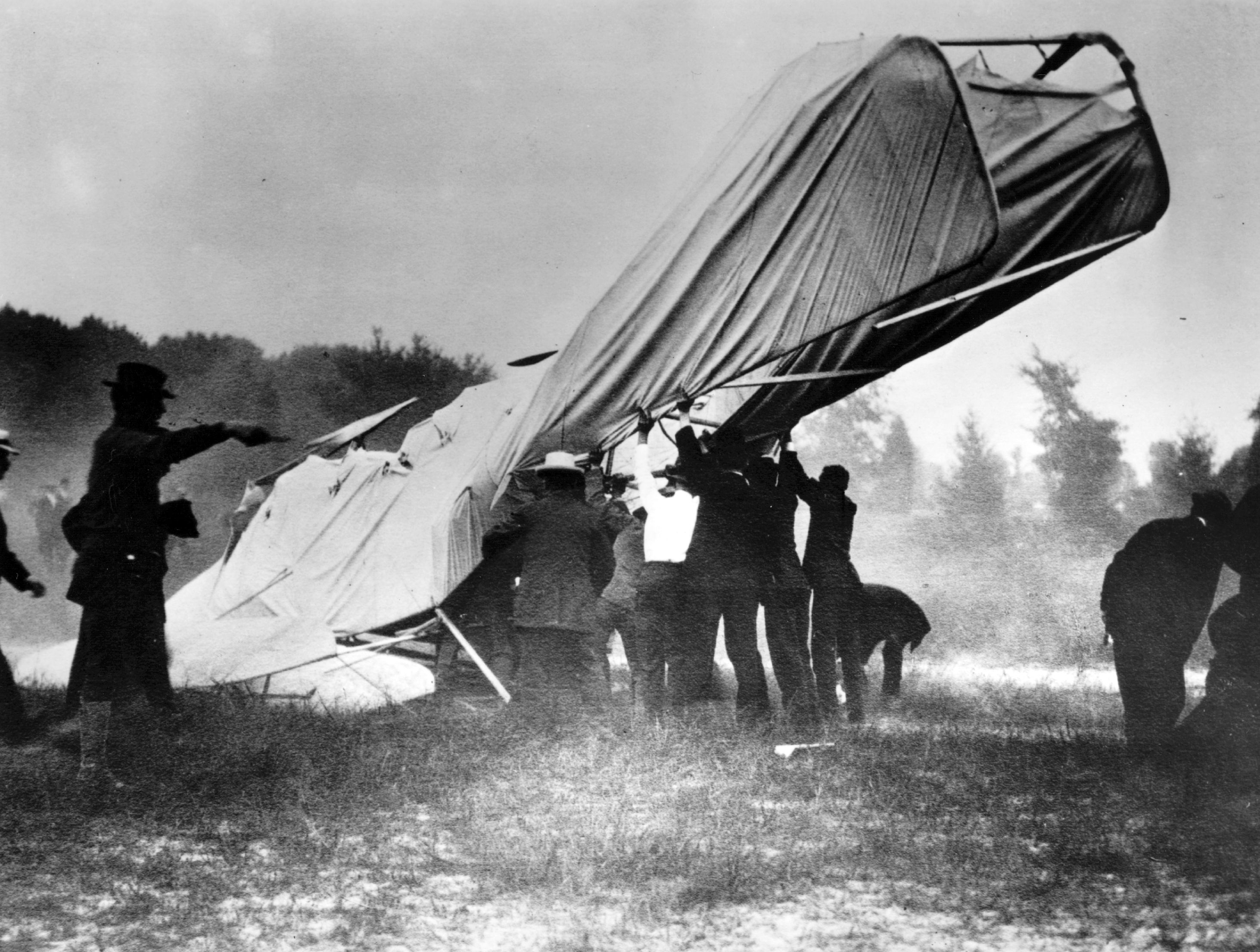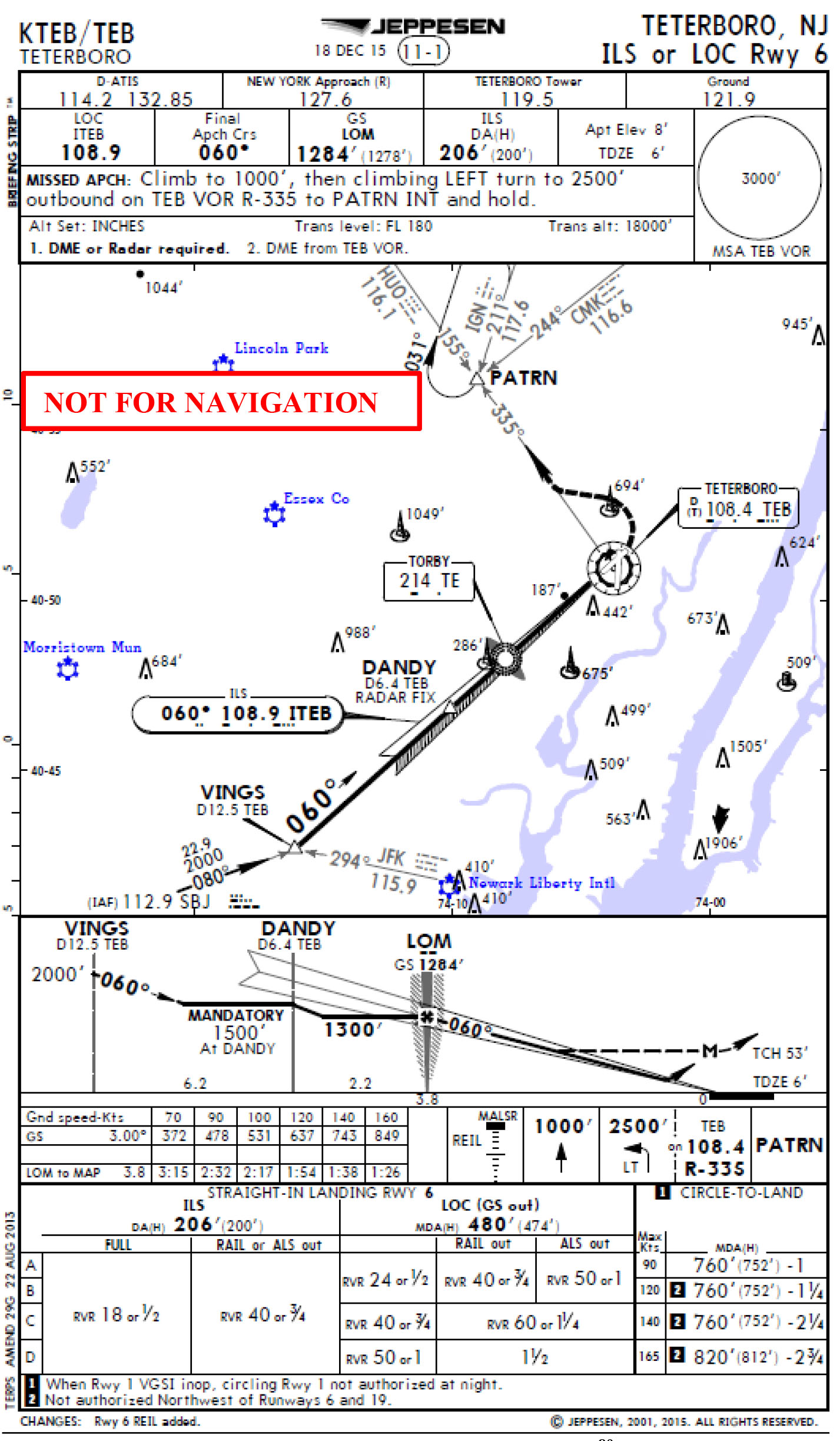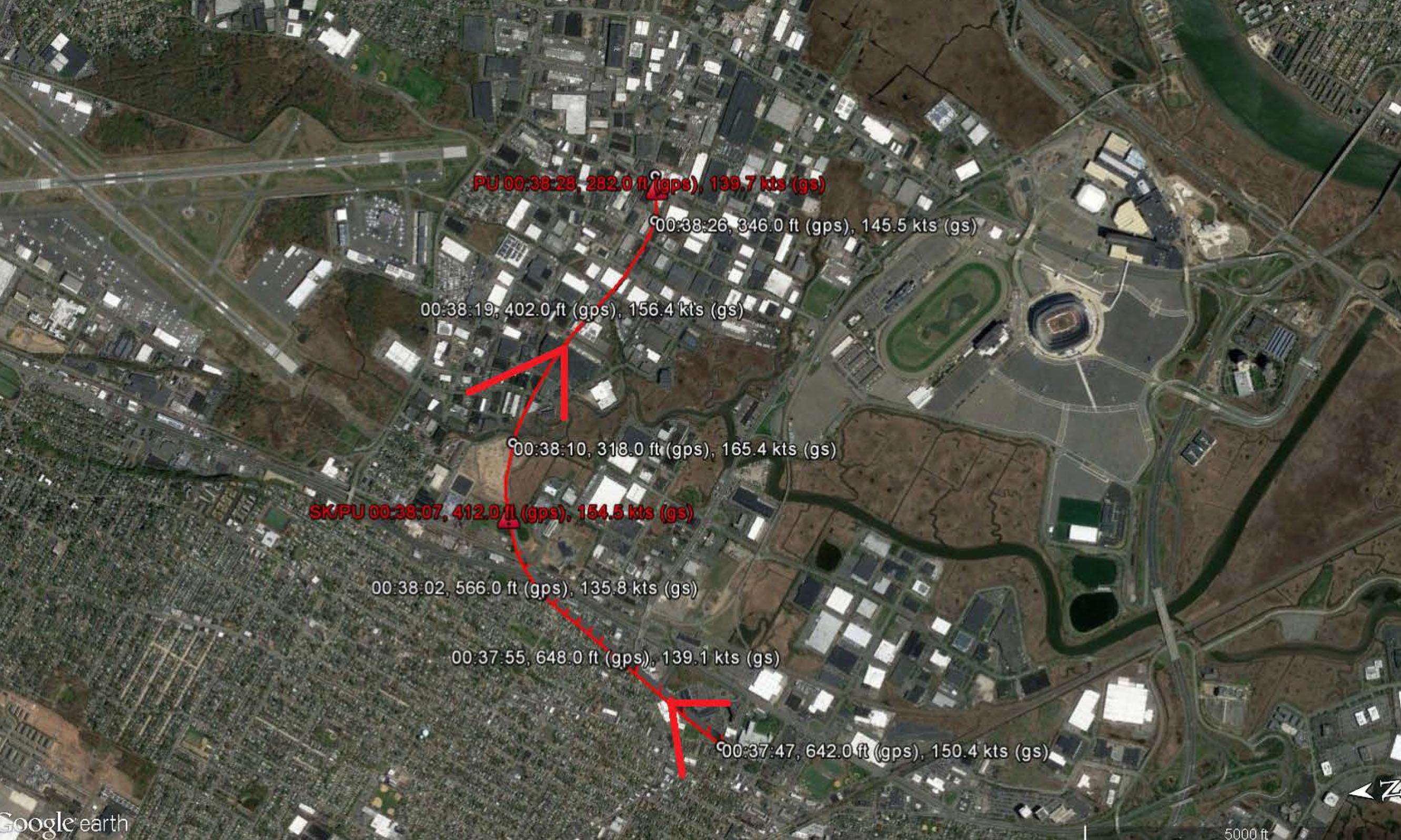We in the aviation community take it as an article of faith that those who fill the seats in an airplane cockpit for a living are, in every sense of the word, professionals. Whether you wear the epaulets of a commercial flight crew or the coat and tie of a private operator, there is no doubt in your mind that you are a professional. When a noteworthy crash or even a “near crash” reminds us that not all who fly for a living live up to these ideals, our faith is unshaken. We are professionals.
— James Albright

Updated:
2018-03-01
But what does the word really mean? What are the requirements for entry into this lofty club of gravity defiers? Is there a litmus test of some sort? We are, of course, entering the “touchy feely” region of aviation here. But I think the effort will be worth it because coming to grips with the meaning of professionalism can provide us a way of establishing a level of safety amongst aviation practitioners. It will also provide a way for us to detect those who fall short.
1 — Professionalism: What's in a word?
6 — Understanding the professionalism and safety relationship

1
Professionalism: What's in a word?
Many pilots like to equate the job of flying people from Point A to Point B with that of driving a cab. The last time I had to interview for a job I told the person on the other side of the table that I knew my place in the food chain. I said, tongue in cheek, “I am little more than a limo driver.” She was alarmed and quickly corrected me. “Oh no! You are much more than that. You are more like a doctor.”
I got the job and for the next few years she would sneak up on me in the cockpit and watch in amazement at our crew coordination before making flight management system inputs, briefing instrument approaches, or calling out traffic. One day she caught me in the right seat answering a radio call, changing the altitude selector, and initiating a course change. Each sequential step included a hand gesture that allowed the other pilot a chance to check and approve my actions. The boss tapped me on the shoulder, “You are more like a surgeon.”
Surgeon. Now that is a word that immediately evokes the thought of “profession.” But what does that word mean, really? Looking it up doesn’t help much. Profession comes from the Latin word profitēri, which means to publicly declare. English dictionaries are a little more useful when defining “professional.” The Merriam-Webster dictionary, for example:
professional (noun)
a: of, relating to, or characteristic of a profession
b: engaged in one of the learned professions
c: characterized by or conforming to the technical or ethical standards of a profession
d: exhibiting a courteous, conscientious, and generally businesslike manner in the workplace
Source: The Merriam-Webster dictionary
Putting the dictionaries aside, I decided to take a page from a surgeon who wrote a book looking to aviation for lessons of his own. Dr. Atul Gawande, author of The Checklist Manifesto: How to Get Things Right, defines professionalism in terms that should ring true for we aviators.
All learned occupations have a definition of professionalism, a code of conduct. It is where they spell out their ideals and duties. The codes are sometimes stated, sometimes just understood. But they all have at least three common elements. First is an expectation of selflessness: that we who accept responsibility for others – whether we are doctors, lawyers, teachers, public authorities, soldiers, or pilots – will place the needs and concerns of those who depend on us above our own. Second is an expectation of skill: that we will aim for excellence in our knowledge and expertise. Third is an expectation of trustworthiness: that we will be responsible in our personal behavior toward our charges.
Source: Gawande
But Dr. Gawande notes that we aviators have a fourth element that is absent from many professions: discipline. We are expected to be disciplined when following prudent procedure and in our dealings with others. These four elements – selflessness, skill, trust-worthiness, and discipline – provide us with a road map to follow and a bar that we must pass to enter into our profession. But, more importantly, they offer a way to detect when professionalism decays to “occupationalism,” as we’ve seen in far too many recent accidents.
2
Selflessness
The romantic view of the pilot profession usually starts with the dashing young aviator in an open cockpit, white scarf in the wind, looking down on the world without a care. In the days before data link, transponders, air traffic control, and two-way radios, flying airplanes was truly an act of individualism. But even in the days of the Wright Flyer, an aircraft crash could involve collateral damage. On September 17, 1908, Army Lieutenant Thomas Selfridge was the first airplane passenger to die in a crash with pilot Orville Wright at the controls. As aircraft have become faster and larger, statistics have grown to include three categories of aircraft crash casualties: crew, passengers, and ground personnel. No pilot can ever feel his or her actions impact only themselves. The very act of piloting an airplane must be selfless.
Try to imagine if the Cockpit Voice Recorder (CVR) of your most recent flight became the most read news in the aviation world for a week. How would your professionalism have stood under the microscope of public scrutiny? Your professionalism will be measured not only in the skill you displayed for the intended maneuver, but also in your language and your tone of voice in the Cockpit Voice Recorder (CVR).
3
Skill
A tragic case study of professionalism was provided by the pilots of Learjet 35A N242DA on May 15, 2017. They died when attempting to fly a “circling approach” into Teterboro Airport (KTEB), New Jersey. Although the National Transportation Safety Board (NTSB) investigation is not yet complete, the publicly released pilot records and CVR transcript reveal a distinct lack of professionalism. Both pilots were clearly lacking in the skill necessary to fly their aircraft on a day that demanded a high level of performance.
The captain’s training records show multiple failed attempts to upgrade his pilot certificate, including failing the commercial and airline transport pilot check rides. One of his certificates included a circling approach restriction to visual meteorological conditions only. He took three additional simulator training sessions prior to his most recent Learjet qualification check ride in 2016, including two where he was deemed “not yet proficient” in circle-to-land maneuvers. Since then, he had satisfactorily passed three checks that included circle-to-land maneuvers.
The first officer required four additional simulator training sessions and also received a “not yet proficient – additional training required” grade for the circle-to-land maneuver. He qualified for his operator’s lowest duty position assignment, “SIC-0,” which restricted him to Second in Command duties as the Pilot Not Flying (PNF) only. The company was planning to upgrade him to “SIC-1” later in the month, which would have allowed him to act as Pilot Flying (PF) on empty legs when authorized by a check airman or management pilot.
Of course, the act of failing check rides and requiring additional training doesn’t automatically remove a pilot from the ranks of professionals. What we do for a living isn’t easy and the road to success can be paved with failures that are destined to become learning exercises. But each of these failures, if not adequately corrected, become personal limitations a pilot must heed. A pilot who cannot reliably fly an Instrument Landing System (ILS) approach to minimums, for example, should never attempt such an approach in an airplane outside of the training environment. To do otherwise could put lives at risk. In the case of N452DA, both pilots exceeded their own limitations with a predictable and tragic result.
4
Trustworthiness
The flying public assumes that every component of aviation exists in an envelope of safety. Everything from the people who design and build the aircraft to the aviators at the controls are believed to exist with one primary condition: safety comes first. The aircraft is certified with specific limitations to prevent it being operated in conditions it cannot handle. The operator is also constrained to ensure the public’s safety. But the final component in this public trust rests with the pilots at the controls. It is up to these aviators to operate within these limitations and a third, more important limitation: that of their own capabilities. The pilots of N452DA failed to do so.
Despite company rules, the captain allowed the first officer to fly the leg into Teterboro. The gusty winds that day would have challenged even the most highly experienced pilots, but the captain did not avail himself of several opportunities to increase his situational awareness. He attempted to get an Automatic Terminal Information Service (ATIS) report for the airport but was distracted by the need to closely monitor the first officer, who was having difficulty maintaining their assigned altitude.
Cockpit-1: “Information Zulu. Who the [Expletive] knows what’s going on (in) Teterboro.”
Cockpit-1: “Don’t have time to listen to it.”
Cockpit-2: “No worries.”
Source: NTSB Docket, N452DA, Group Chairman's Factual Report, pp. 33-34
The captain did not hear the winds or learn that the approach in use at Teterboro was the ILS Runway 06 Circle to Runway 01, until on the ILS approach. He missed other clues from aircraft on his frequency who were getting and acknowledging the approach clearance. Once established on the localizer, he finally understood after he was issued the same clearance:
New York Approach Control: “Learjet four five two delta alpha is eight miles from VINGS cross VINGS at two thousand feet, cleared I-L-S runway six, circle runway one.”
Source: NTSB Docket, N452DA, Group Chairman's Factual Report, p. 45
Two miles later:
Cockpit-1: “We’re circling runway one. So circling minimums . . . is seven hundred and sixty.”
Cockpit-2: “Oh [Expletive].”
Cockpit-1: “Yeah.”
Source: NTSB Docket, N452DA, Group Chairman's Factual Report, p. 46
Most pilots with experience at Teterboro understand that the ILS Runway 06 Circle Runway 01 is extremely demanding, especially with an overshooting wind. It wasn’t an appropriate approach for the novice first officer and was probably beyond the captain’s skill level as well. The crew made a difficult approach even more so because they appeared to misunderstand the purpose of the maneuver.
The Teterboro ILS Runway 06 Circle 01 is a demanding approach that can be made more so by a common misunderstanding of the “circle” terminology. Teterboro does not have an instrument approach to Runway 01 because such an approach would interfere with the flight patterns at nearby Newark International Airport (KEWR), New Jersey. The ILS Runway 06 Circle 01 offers pilots a quick way to align with the landing runway while giving Teterboro tower a way to quickly sequence a high volume of traffic.
An experienced Teterboro pilot begins the ILS Runway 06 Circle Runway 01 maneuver at TORBY, which is 3.8 nautical miles from Runway 06. This is well outside the circling approach radii listed in the United States Standard for Terminal Instrument Procedures (TERPS) prior to Change 21. For the Category D Learjet, the radii as designed would have been 2.3 nautical miles. (Under newer criteria, the radii would have been expanded to 3.7 nautical miles.)
This technique is contrary to the way almost all pilots are trained. They are conditioned to always circle at the MDA and within the maximum circling area. (That’s what they do on every check ride.) But the ILS Runway 06 Circle Runway 01 is not an instrument approach clearance requiring these altitude minimums and radii maximums. It is simply an instruction to maneuver from one runway to the other. Experienced instrument pilots will routinely circle as high as normal traffic pattern altitude and displace their aircraft as far as would be used in a normal downwind, so as to create as familiar a visual picture as possible. The Teterboro Circling Conundrum includes the most widely used techniques for these “circling” approaches.
While the point at which circling will be initiated is up to the pilot, approach control and tower often give pilots additional clues, as was the case with N452DA:
New York Approach Control: “Learjet two delta alpha, contact Teterboro tower one one niner point five. Be sure you cross DANDY fifteen hundred feet, circle at TORBY.”
N452DA: “Alright DANDY at two hundred feet, circle at TORBY. Nineteen five. Four five two delta alpha.”
New York Approach Control: “Uh Dandy at fifteen hundred feet two delta alpha.”
N452DA: “DANDY at fifteen. Four five two delta alpha.”
Source: NTSB Docket, N452DA, Group Chairman's Factual Report, pp. 51-52
The captain became distracted and forgot to change frequencies, which would have allowed him to hear another situational awareness clue from an aircraft breaking off the approach.
New York Approach Control: “Gotham eight thirty two New York Approach roger. And uh expect resequence the I-L-S six circle one. What happened [Unintelligible]?”
Gotham 832 Radio Transmission: “Yeah just the winds weren’t favorable at that time so [unintelligible] another one.”
Source: NTSB Docket, N452DA, Group Chairman's Factual Report, p. 52
The captain was reminded to change frequencies about two minutes later; he made the change but didn’t check in until tower called. At that point he was busy coaching the first officer who was having trim and pitch control issues in the gusty winds. Once he ensured the first officer was holding the Minimum Descent Altitude (MDA) of 760 feet, he answered tower’s call.
Teterboro Tower: “November four five two delta alpha, Teterboro tower.”
N452DA: “Yeah we’re up for the circling uh one two delta alpha.”
Teterboro Tower: “Roger Lear four five two delta alpha. Wind three six zero at one six gusting three two. Runway one, continue traffic holding in position.”
Source: NTSB Docket, N452DA, Group Chairman's Factual Report, pp. 56-57
At the point where they should have been turning to base, the captain was busy coaching the first officer.
Cockpit-1: “Watch your airspeed. Hand on the [EXPLETIVE] throttle.”
Cockpit-1: “’kay we’re gonna circle for runway one.”
Cockpit-2: “Okay.”
Cockpit-1: “So we’re kinda on a downwind.”
Cockpit-1: “So, go ‘head.”
Cockpit-1: “Break off the autopilot.”
Cockpit-2: “There ya go.”
Cockpit-1: “Hand on the [Expletive]”
Teterboro Tower: “(Delta Alpha) you gonna start that turn?”
N452DA: “Yeah sir we’re doing it right now four (sixty) delta alpha.”
Source: NTSB Docket, N452DA, Group Chairman's Factual Report, pp. 57-58
5
Discipline
They began their turn about a mile from Runway 06 and would have been hard pressed to make the turn to final on Runway 01 on a calm wind day. With an overshooting wind gusting to 32 knots, the turn to final would not have been possible at normal bank angles. The best decision at this point was to go around, just as a previous aircraft had done. Novice pilots may see a go around as evidence of a personal shortcoming and something to be avoided at all cost. But a professional pilot has the flight discipline to realize that no matter the cause, a go around is just another maneuver needed to keep things safe.
While in the turn the captain again asked the first officer to watch his airspeed. The first officer responded with “your flight controls” but the captain did not acknowledge. The Enhanced Ground Proximity Warning System (EGPWS) announced they were at 500 feet (160 feet low) to which the captain said, “Disregard.” After the EGPWS alerted “Sink rate, pull up” the first officer repeated his request to relinquish the aircraft.
Cockpit-2: “I’m gonna give ya your controls, okay?”
Cockpit-1” “Alright, my controls.”
Source: NTSB Docket, N452DA, Group Chairman's Factual Report, p. 59
Sixteen seconds later the aircraft impacted the ground about a half of a mile from the end of Runway 01. Both pilots were killed, but there were no ground fatalities. The NTSB has not yet determined a cause for this accident, but the available evidence indicates both pilots were placed in a situation well above their stick and rudder skill levels, as well as their knowledge and expertise.
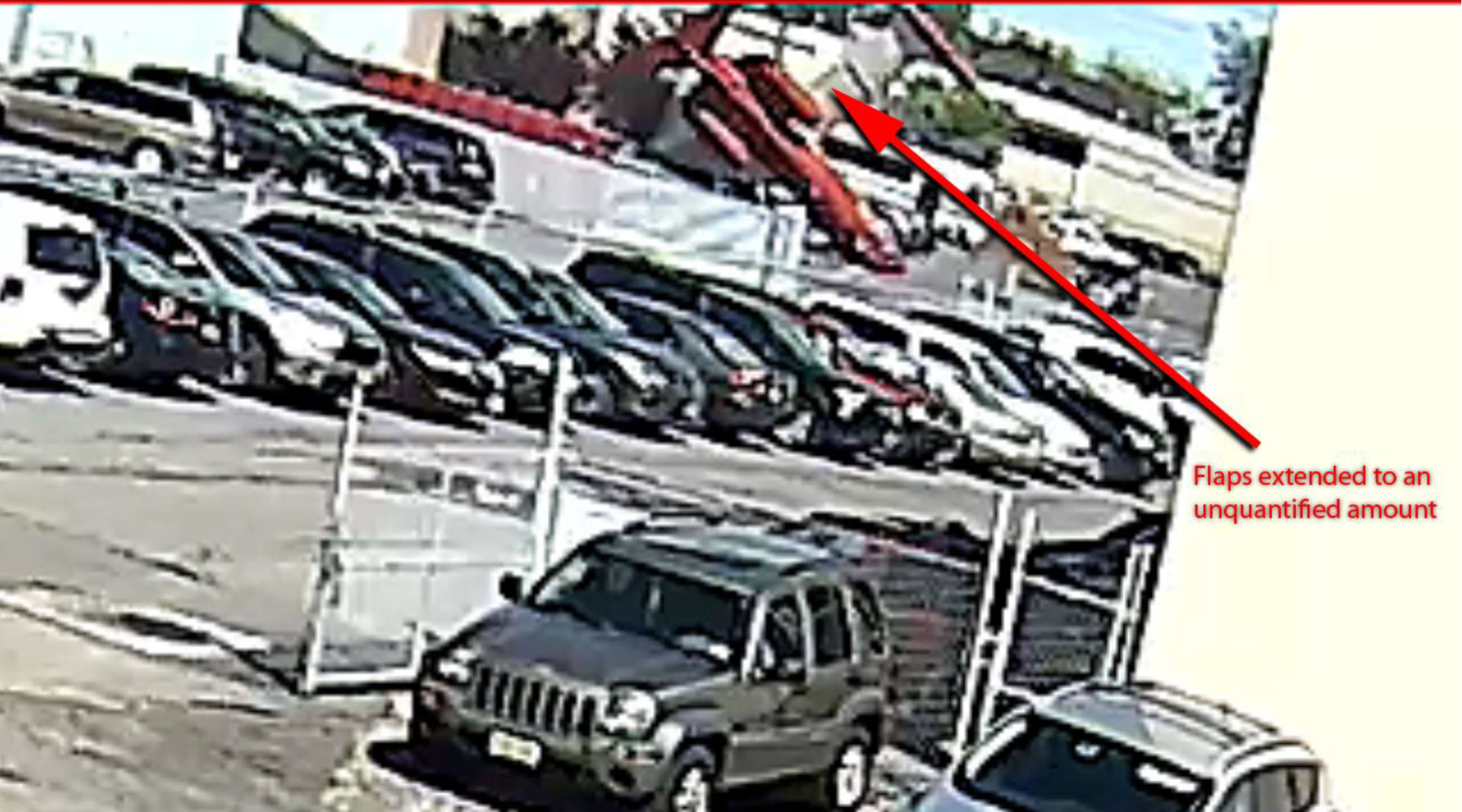
Security video shot at 770 Commercial Avenue, Accident Docket, Security Video Recordings, Figure 4.
For many, being handed the keys to a Learjet would be seen as winning the aviation lottery. Winners or not, it is up to pilots as professionals to turn down a flight (or airplane) beyond their capabilities. It may seem to some there is no harm in trying, but even flying solo an airplane can become a projectile capable of killing far more than just the hapless pilot. N452DA plummeted into a densely populated area, fortunately the crash site was a parking lot and nobody else was killed. But it could have been worse. The aircraft flew two legs that day, the first from Hanscom Field (KBED), Bedford Massachusetts to Philadelphia International Airport (KPHL), Philadelphia, Pennsylvania. The two passengers were scheduled to fly on to Teterboro but the landing into Philadelphia scared them so much they elected to drive instead.
They taxied and took off with no problems. The flight was turbulent as they flew through the front but the forecast all day was the front from the northeast to PHL would clear out, and it was clear skies when they landed. He said the landing was one of the scariest he had ever experienced. As the front came through PHL, there as pretty strong winds behind it and the weather was moving through pretty fast. He had flown into PHL before and they always landed on a different runway than the big jets used. This runway was shorter. The wind was from west and they were landing more to the northwest. When they were about 5 or 6 feet off the ground, the plane felt like it fishtailed as if it was a car on ice. The tail fishtailed so much he thought at one point they were going to land at 90 degrees to the runway. His brother sitting next to him grabbed his hand on the armrest and was like “holy cow, what the hell was that.” They landed and then got off the plane. They went into the bathroom, getting ready to get in the car, and his brother looked at him and said, “I don’t want to fly on that plane anymore.” They both looked at each other and “said let’s drive up to TEB.” They did not want to have to go through that again since it was unnerving. They told the pilots they were just going to get in the car, go play in this golf tournament and then drive up to NJ and “you guys do what you gotta do.” An hour or two later he saw on one of the news apps that said a small plane crash in northern New Jersey. That night his brother said to turn the news in New York and they saw the red tail of a plane embedded in a hangar or warehouse outside a runway and they knew the tail number and learned that it was the airplane they had been on.
Source: NTSB Docket, Interview Summaries, p. 93
6
Understanding the professionalism and safety relationship
Most professionals can spot unprofessional behavior in others without the need for any kind of test at all: we know it when we see it. But we are reluctant to do or say anything because even the worst of this behavior rarely results in a loss of life or property. But year after year, we see a few deadly examples where it does. It may be helpful to replace our binary measure of professionalism with the four components provided to us by Dr. Gawande: selflessness, skill, trust-worthiness, and discipline.
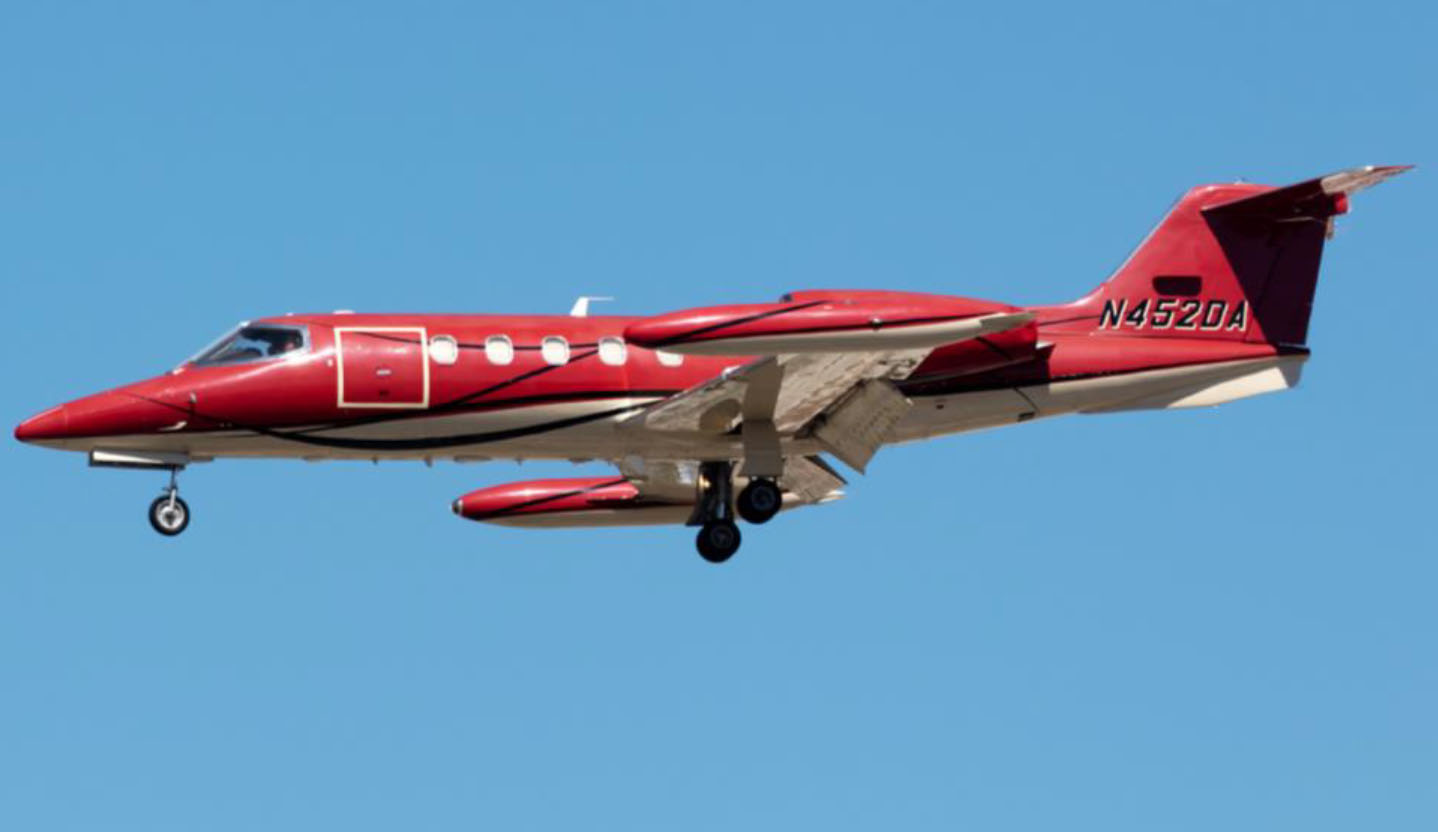
Learjet 35 N452DA, NTSB Docket
If you’ve ever flown with a pilot who says, “it’s just a job” or in some way diminishes the importance of what he or she is doing, you have your first warning sign of unprofessional behavior. There was a push at a major air carrier two years ago to pay pilots for study time. In other words, if they weren’t “on the clock,” they didn’t need to study. The rule failed but the idea persists. Truly professional pilots realize that what they are doing for a living requires a devotion to the craft that goes beyond merely filling the requirements of a job. We sometimes fail to recognize this kind of professionalism for what it is. It is a selflessness that forces us to put in the extra hours and to weigh our decisions more carefully, because there are lives at stake other than our own.
Hollywood would have you believe that a pilot’s skill is part of a genetic code, of that “stuff of righteousness” Tom Wolf wrote about in The Right Stuff. But we know that skill is learned in classrooms and simulators, and honed in cockpits. We believe some pilots are naturals, but the act of flying is hardly natural. You may fly with a pilot who is poorly qualified and will be the weakest link when something goes wrong. That pilot may simply need more simulator training, some ground school, or perhaps tightly controlled “seasoning.” Or it could be the pilot shouldn’t be in the cockpit at all. We walk a fine line when facing this problem; but face it we must. Doing so could have saved two lives on May 15, 2017.
But we need to look within as well as without. How confident are we in our own skills? If a circling approach automatically raises your heart rate and forces out a string of expletives, perhaps you need more training before attempting anything in an airplane where lives are at risk. The same holds true if you once had the skill but are no longer proficient. The flying public, your peers, and innocents on the ground are trusting that you are fully qualified and proficient when you operate aircraft.
Finally, even if you have the right intentions, qualifications, and believe you are doing things as safely as needed, are you behaving as safely as possible? Do you have the discipline to pull out the checklist every single flight? Are you observing traffic pattern speed limits even when the chance of being caught speeding is nil? Is your oxygen mask morphing itself into its holder because it hasn’t left that case since it was installed? Was your mandatory rest period spent on a crew room Barcalounger to avoid the cost of a hotel room?
If we care to be honest with ourselves and others, it becomes abundantly clear that not all of us who fly airplanes for a living are “professionals” as we hope that word should be defined. Some of us have become “occupationals” and that should alarm anyone who flies for a living. Indeed, it should alarm anyone who flies as crew or passenger. I am often accused of taking this idea to an evangelical extreme. So let’s finish with that idea.
While speaking to a safety forum a few years ago, I described the pilots of another ill-fated business jet as completely unprofessional. I was followed by a retired member of the National Transportation Safety Board who noted that he had never met a widow, widower, or family member of a deceased pilot who didn’t think their loved one wasn’t the best pilot who ever flew an airplane. I realized immediately that had to be true, but it bothered me enough so that I thought about it for a long time. These families believed their loved ones were the best, no doubt, because the pilot they had lost believed that too. I think my family would express similar sentiments about me and that’s when the idea came to me: It is up to us aviators to become the professionals everyone we love believe us to be.
It is up to each of us to dedicate more effort, study, and devotion to our chosen profession than those in occupations where the stakes are much lower. If your position pays you by the hour, you must force yourself to ignore the fact you are “off the clock” when it comes to personal study time as well as any additional training. Just as a competent doctor will spend countless hours studying medical journals and attending specialist conferences, we aviators must go above and beyond the strict outlines of our jobs. We aren’t working at jobs, after all. We are professionals.
References
(Source material)
Accident Docket, Lear 35 N452DA, NTSB CEN17MA183
Gawande, Atul., The Checklist Manifesto: How to Get Things Right, 2009, Metropolitan Boos, Henry Holt and Company, LLC, New York.

